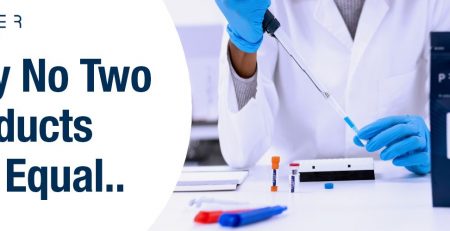Happy New Year to one and all. As it is the New Year, here at Primerdesign we have decided to share our New Year’s resolution, which consist of 5 laboratory practices to live by this year.
1) A clean and tidy laboratory
If you are to do only one thing this New Year, then please make sure you have a clean and tidy laboratory. This is our number 1 resolution.
Having a clean lab has many advantages that are vital for everyday working life. Keeping work stations clean and tidy allows for an efficient lab as it reduces the accidental re-order of reagents as reagents can be lost under clutter or be put in the wrong place and cannot be found. The tidiness of the laboratory will allow you to locate items easily and this will increase the organisational element of the lab.
The most important aspect of a clean and tidy laboratory is to reduce the chance of contamination. Equipment becoming contaminated through a dirty laboratory can lead to errors during experiment procedures leading to results that are either false positive or false negatives.
As well as enhancing organisation and work flow, an imperative point for cleaning a lab is to reduce the dangers and hazards that are constantly present in a lab. An important point to live by is that a clean lab makes a safe lab.
2) Calibration
The second New Year’s resolution is to make sure all equipment is sufficiently calibrated. Calibration is essential in the laboratory when it comes to the accuracy of equipment. Having instruments that are not calibrated or have not been calibrated in a long time raise questions about the accuracy of the results produced.
Calibration is the comparison between a known measurement (the standard) and the actual measurement your instrument produces. Over time, equipment can degrade, and accuracy of the instruments becomes imprecise, which can lead to wrong conclusions from research results. Therefore, it is important to have all equipment in the laboratory constantly calibrated and updated.
At Primerdesign the lab equipment is calibrated every 6 months to maintain instrument accuracy and to adhere to industry standards. This is always equipment dependent, with calibration being organised earlier if certain products require it. For example, pipettes are calibrated more often than most instruments, because every use impacts the accuracy and precision of the device. Pipettes are also used with an increased frequency compared to other equipment.
3) Standard Operating Procedures (SOPs) and quality management
As with all organisations irrespective of the industry, Primerdesign strive to produce the best quality products and services to maintain a competitive edge and keep customers satisfied.
Each organisation has clear quality manuals that define their quality policies. Primerdesign is no different and adhere to specific standard operating procedures which define practices that are followed to benchmark quality of products and services.
The resolution here is to follow the clear SOPs that your organisation has in place to produce quality results, products and services in a safe, efficient way.
4) Replicate testing
Replication of results is vital when it comes to reliability and significance. The more replicates of a test confirm a result, which allows for more confidence in the outcome produced. Having concurrent data through replication does not prove data accuracy, but increases reliability.
When data is not in agreement, it could mean that one or more of the data points are invalid. When this occurs, repeats should be used to identify the outliers. Here at Primerdesign, triplicates are used as standard to ensure results are reliable and reproducible. Additionally, when there are outliers, further retests are conducted.
The fourth resolution is to replicate results constantly and if there are outliers, to make sure you conduct a retest to make sure your results are correct.
5) Document everything and use digital methods
The final New Year’s resolution is to document everything that you do in a lab and for added effectiveness, use digital lab books. It is important to document all work so that it allows others to repeat your experiments and theoretically if all is correct, to produce the same results.
‘Lab books’ are not documented in the same way they used to be and are becoming digital, because equipment has become modernised. Data tends to now be stored on electronic databases, and equipment include automated analysers that automatically produce data in an electronic form.
The benefit of this is that it permits easier analysis of data and the electronic documentation means that greater quantities of data can now be stored. It is a necessity though, that this is backed up to ensure that data is never lost. The golden rule is that if you can’t access a document then you did not sufficiently document it. To reduce this, it is vital to guarantee that you back up data stores and all actions are documented so if a ground-breaking discovery is made then it can be repeated and proven.
In conclusion, follow these five lab practices of keeping a clean lab, keep equipment calibrated, follow SOPs and quality management, replicate testing and finally document all pieces of work and do this through digital methods as your New Year’s resolutions to ensure a successful laboratory. If you adhere to these, it will increase the reliability, validity and accuracy of results produced. Here at Primerdesign we live by these lab practices as Jenny our laboratory manager stated:
“We ensure a suitable working environment is maintained constantly through weekly decontamination, good lab practice by wearing lab coats/gloves and restrict who and what goes in and out the labs. These are all vital procedures that are in place to prevent and reduce chance of contamination and increase quality of our products. These 5 lab practices are essential for excellent lab work!”
In the New Year we ask that you follow these 5 vital lab practices, so you too have a fantastic functioning lab.




